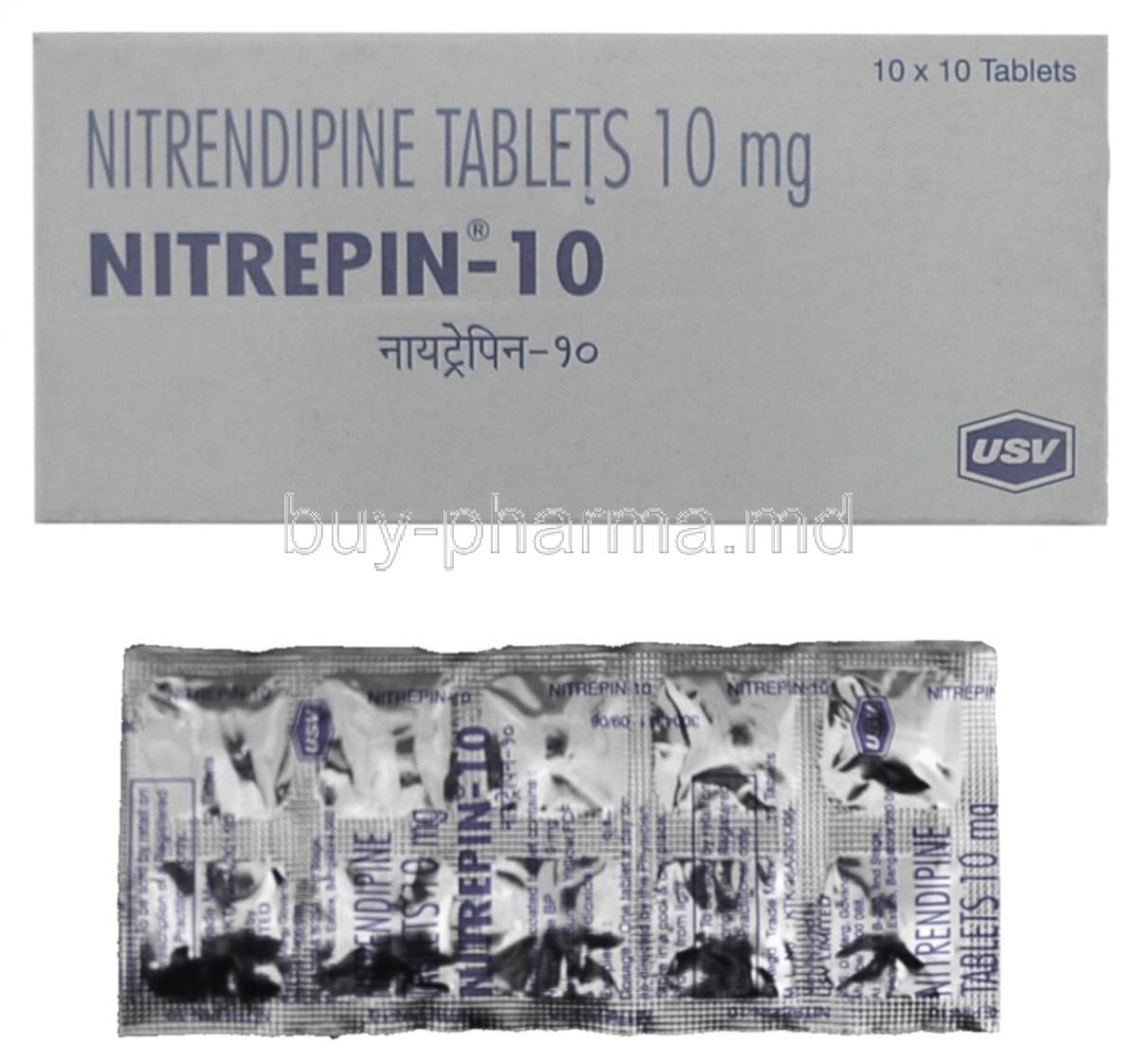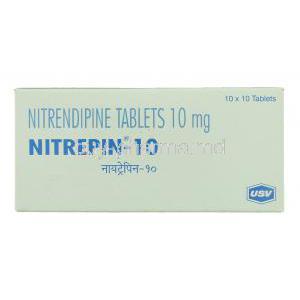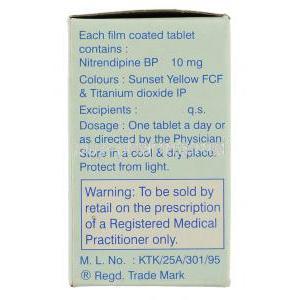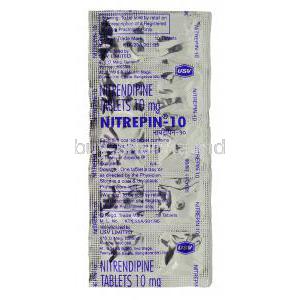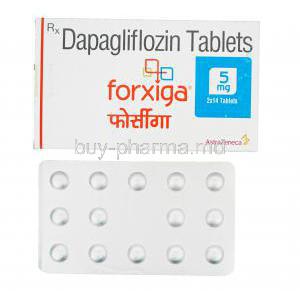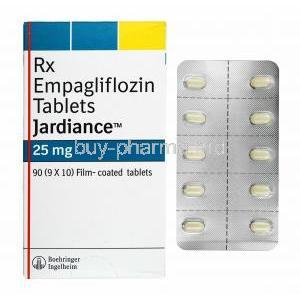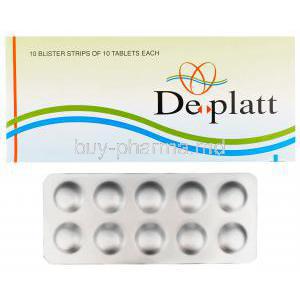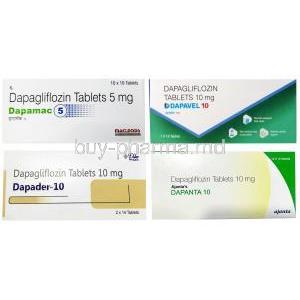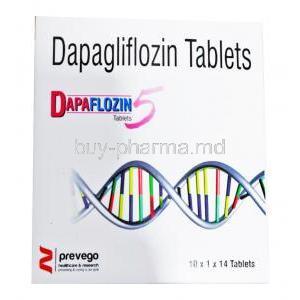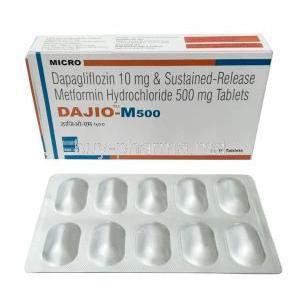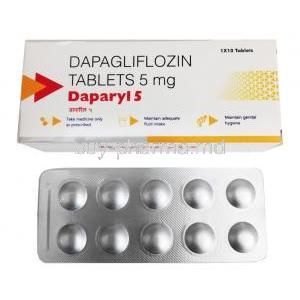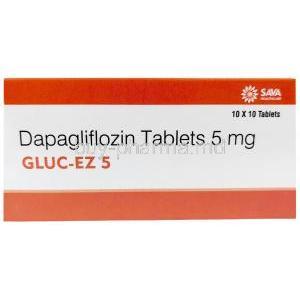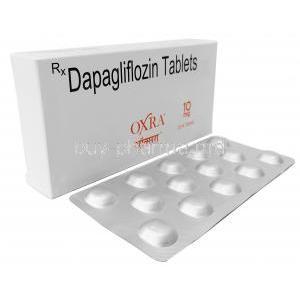Nitrendipine
- I. Introduction
- II. Uses of Nitrendipine
- III. Off-Label Uses
- IV. How Nitrendipine Works
- V. Dosage and Administration
- VI. Composition
- VII. Side Effects
- VIII. Drug Interactions
- IX. Warnings and Contraindications
- X. Careful Administration and Important Precautions
- XI. Special Considerations for Specific Populations
- XII. Overdosage
- XIII. Storage
- XIV. Handling Precautions
I. Introduction
Brief History of Nitrendipine
Nitrendipine, a pharmaceutical in antihypertensive drugs, emerged during the later years of the 20th century. Belonging to the dihydropyridine class, it has played a role in combating hypertension-related diseases within the medical community.
Overview of Calcium Channel Blockers
Calcium channel blockers are a known group of medications that are recognized for their ability to hinder the entry of calcium ions into cells found in the muscles of the heart and blood vessels. What does this mean? It reduces the stiffness of arteries, which ultimately leads to a decrease in blood pressure. These medications have proven to be effective in treating cardiovascular conditions and providing significant benefits.
Importance of Understanding Medication Before Use
A thorough knowledge of any medication is crucial for using it. Understanding its mechanisms, possible side effects, and how it interacts is essential to ensure patient safety and improve treatment results.
II. Uses of Nitrendipine
Hypertension Management
Nitrendipine is a medication used to treat high blood pressure.
References:: Nitrendipine | DrugBank Online.
How Effective is Nitrendipine in Blood Pressure Control
Nitrendipine is a medication used to treat high blood pressure. It has been shown to reduce both systolic and diastolic blood pressure. Nitrendipine helps alleviate symptoms and reduces the potential risks associated with cardiovascular issues.
References: Nitrendipine | DrugBank Online.
Coronary Artery Disease
Nitrendipine is a type of calcium channel blocker that can lower blood pressure and improve blood flow to the heart. It has shown effectiveness as a preventive treatment for individuals diagnosed with coronary artery disease, where the arteries that supply blood to the heart become narrowed or blocked by plaque1. It helps reduce the occurrence of events by facilitating the dilation of coronary arteries2.
2: Coronary artery disease patients requiring combined anticoagulant and antiplatelet therapy. UpToDate. https://www.uptodate.com/contents/coronary-artery-disease-patients-requiring-combined-anticoagulant-and-antiplatelet-therapy 1: Side effects of calcium channel blockers. AHA/ASA Journals. https://www.ahajournals.org/doi/pdf/10.1161/01.HYP.11.3_Pt_2.II42
Angina Pectoris
Nitrendipine is a dihydropyridine calcium-channel blocker used to treat hypertension, chronic stable angina pectoris, and Prinzmetal’s variant angina123. It works by inhibiting the influx of extracellular calcium across the myocardial and vascular smooth muscle cell membranes, thereby causing vasodilation and reducing the oxygen demand of the heart2. Nitrendipine is not typically the treatment choice for angina pectoris, as other drugs, such as beta-blockers and nitrates, are more effective and have fewer side effects4.
1: by Application (Hypertension, Chronic stable Angina Pectoris … 2: Nitrendipine: Uses, Interactions, Mechanism of Action - DrugBank Online 3: Nitrendipine | Uses, Dosage, Side Effects, FAQ - MedicinesFAQ 4: Patient education: Medications for angina (Beyond the Basics)
Sublingual vs Oral Administration
Nitrendipine is a dihydropyridine calcium channel blocker used to treat hypertension and angina12. How Nitrendipine is administered can affect how it is absorbed and processed in the body. When taken under the tongue (sublingual), it gets rapidly absorbed into the bloodstream and has a faster onset of action but a shorter duration of effect2. When swallowed orally, it increases its therapeutic effects, as it has a higher bioavailability and a longer half-life12. However, oral administration may also increase the risk of side effects such as headache, flushing, and edema1.
1: Nitrendipine - Oral Patient Medicine Information - MIMS 2: Nitrendipine - Wikipedia
III. Off-Label Uses
Raynaud’s Phenomenon
Raynaud’s phenomenon (RP) is a condition that involves episodes of blood vessel spasms in the fingers, toes, ears, nose, or other parts of the body, causing reduced blood flow and color changes12. It can be triggered by cold, stress, or emotional upset23. RP can be primary (without any underlying cause) or secondary (associated with other diseases or factors)4. Nitrendipine is a calcium channel blocker that can relax the blood vessels and improve the blood flow5. There is increasing evidence suggesting that Nitrendipine could be a treatment option for RP, especially for patients who do not respond to other drugs or have severe symptoms53.
1: Primary Raynaud Phenomenon | AAFP 2: Raynaud’s Phenomenon | Johns Hopkins Medicine 3: Treatment of Raynaud phenomenon: Initial management 4: Clinical manifestations and diagnosis of Raynaud phenomenon 5: Patient education: Raynaud phenomenon (Beyond the Basics)
Migraine Prevention
Migraine is a type of headache that causes severe pain, nausea, and sensitivity to light or sound1. The treatment of migraine depends on the severity and frequency of the attacks and the response to different drugs1. Nitrendipine is a calcium channel blocker that lowers blood pressure and prevents angina2. Although it is not universally accepted for this purpose, some medical professionals support the off label usage of Nitrendipine in the treatment of migraines based on the hypothesis that calcium channel blockers can reduce the vasospasm and inflammation that may contribute to migraine pain3. However, more studies are needed to confirm the efficacy and safety of Nitrendipine for migraine prevention3.
1: Acute treatment of migraine in adults - UpToDate 2: Nitrendipine: Uses, Interactions, Mechanism of Action - DrugBank Online 3: Lomerizine - Wikipedia
Chronic Stable Angina Not Responding to Other Medication
Angina is a type of chest pain that occurs when the heart muscle does not get enough blood and oxygen1. It can be caused by narrowing or blockage of the coronary arteries, which supply blood to the heart1. Nitrendipine is a calcium channel blocker that relaxes the blood vessels and improves the blood flow to the heart, thus reducing the angina symptoms. For patients who do not respond well to angina medications such as nitrates or beta-blockers, Nitrendipine can be an alternative treatment option because it effectively blocks calcium channels23. However, Nitrendipine should be used cautiously in patients with heart failure or low blood pressure, as it may worsen these conditions.
2: Nitrendipine: Uses, Interactions, Mechanism of Action - DrugBank Online 1: Patient education: Medications for angina (Beyond the Basics) 3: Calcium channel blockers - Knowledge @ AMBOSS
IV. How Nitrendipine Works
Mechanism of Action
Nitrendipine reduces the constriction of blood vessels. Lowers arterial resistance by hindering the flow of calcium ions across cell membranes.
Role in Calcium Channel Blocking
The medication works by blocking the L-type calcium channels, which leads to the relaxation of smooth muscles and ultimately helps reduce hypertension.
Impact on Blood Vessels
Nitrendipine causes blood vessels to widen, which helps reduce blood pressure by easing the strain on the heart and circulatory system.
Comparison with Other Calcium Channel Blockers
Compared to medications in its class, Nitrendipine provides better tolerance and effectively treats various heart conditions.
V. Dosage and Administration
Standard Dosage for Adults
The recommended starting dose for adults is usually between 10 and 20 mg per day. This can be adjusted based on how the individual responds to the medication and their ability to tolerate it. A maintenance dose then follows this initial dose.
Adjustments for Liver or Kidney Conditions
For individuals experiencing issues, with their liver or kidneys, it is advisable to start with a dose and closely monitor their medical condition.
Recommended Administration Schedule
Importance of Medical Consultation for Dosage Decisions
VI. Composition
Active Ingredients
Nitrendipine contains a dihydropyridine compound as its active component, which gives it its specific pharmacological characteristics.
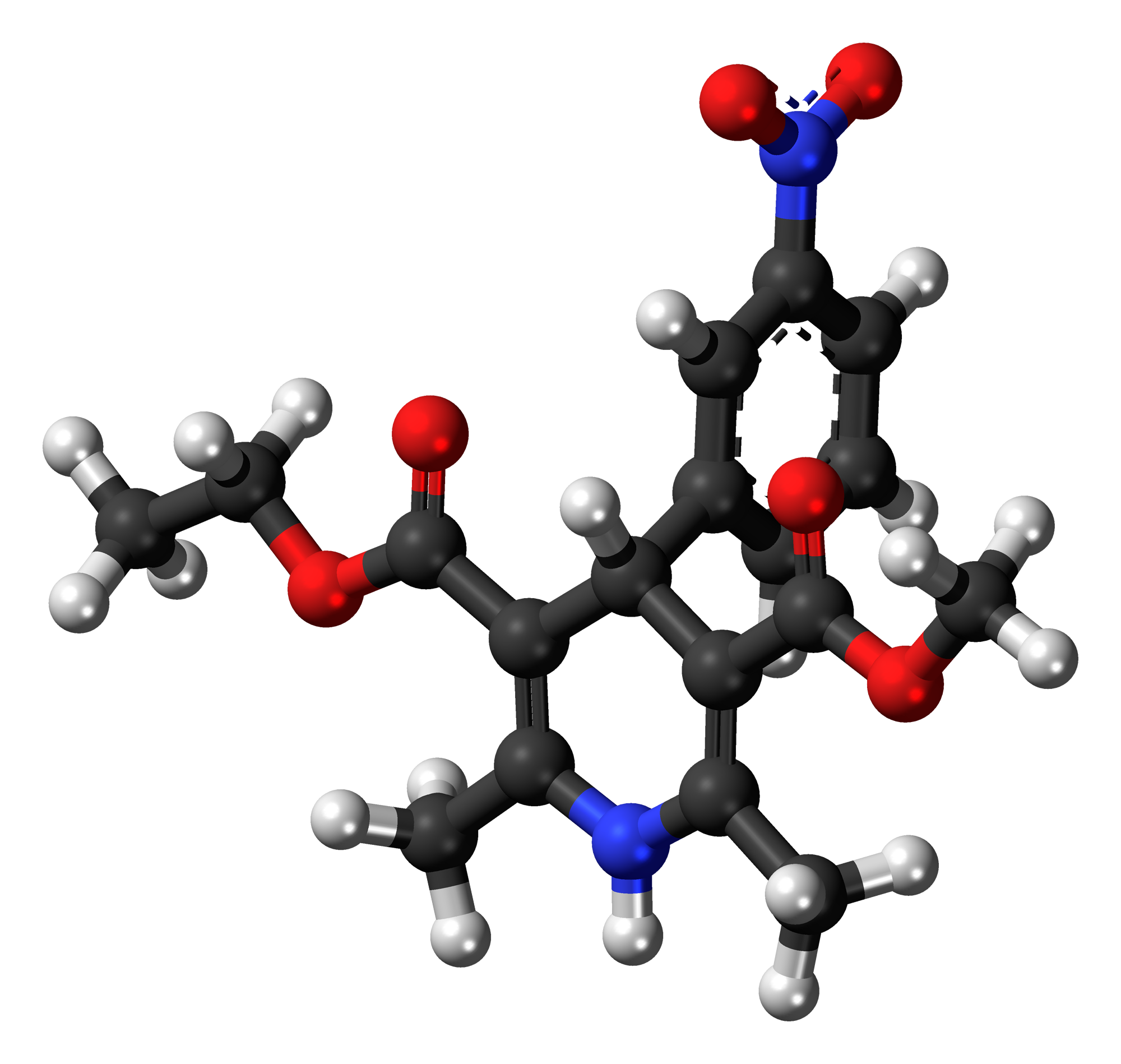
Inactive Ingredients
These inactive compounds, such, as magnesium microcrystalline cellulose, are commonly included alongside the main ingredients. They serve the purpose of carrying and stabilizing the components.
Potential Allergens
People who are highly sensitive, to dihydropyridines should be careful and cautious. Allergic reactions, while not common can still occur and should be taken into consideration.
Available Forms (Tablet, Liquid, etc.)
Nitrendipine is mostly found in tablet form. It can also be obtained in different formulations such as liquid suspension, in specific markets.
VII. Side Effects
Common Side Effects
Some common side effects include feeling dizzy, experiencing flushing, and getting headaches. These symptoms are usually temporary. Fade away as your body becomes used to the medication.
When to Seek Medical Attention for Side Effects
Severe or lasting side effects require immediate medical attention. Specifically, symptoms such as heartbeat or discomfort in the chest should be taken seriously and prompt a visit to a healthcare professional.
VIII. Drug Interactions
Common Drug Interactions
When taking beta blockers or diuretics at the time, it might be necessary to make changes to the dosage to prevent the potential risk of having too low blood pressure due, to their combined effects.
Effect on Other Health Conditions
Patients with liver or kidney conditions may need adjustments to their medication dosage and regular monitoring to avoid any reactions, to the drugs.
Importance of Disclosing All Medications to Healthcare Providers
Ensuring the success of therapy requires disclosing your medication history to healthcare providers so they can analyze interactions comprehensively.
IX. Warnings and Contraindications
Warnings for Special Populations
Although Nitrendipine has a range of therapeutic uses, it is important to exercise additional caution in specific demographic groups. These groups include; individuals Pregnant women, Nursing mothers
Elderly
Elderly individuals often experience changes in how their bodies respond to medications requiring consideration of dosage adjustments to minimize any potential adverse effects.
Pregnant Women
Nitrendipine, similar to other medications used for treating high blood pressure carries potential risks of causing birth defects. Therefore it should only be prescribed when the advantages, for the mother, outweigh the harm to the developing baby.
Nursing Mothers
Because Nitrendipine can pass into breast milk, it is essential to be cautious when administering it during breastfeeding. It is recommended to consider the risks and benefits before making a decision.
Absolute Contraindications
Two factors make it impossible to administer Nitrendipine: blood pressure and a history of allergic reactions.
X. Careful Administration and Important Precautions
Monitoring Blood Pressure Levels
It is crucial to check blood pressure to determine whether the medication is working effectively and to prevent the occurrence of medically induced low blood pressure.
Alcohol Consumption
Drinking alcohol at the time of taking Nitrendipine can significantly enhance its ability to lower blood pressure, which not only makes it inadvisable but also potentially dangerous.
Driving or Operating Heavy Machinery
Because Nitrendipine can cause dizziness, operating machinery or driving while under its effects is hazardous.
XI. Special Considerations for Specific Populations
Administration to the Elderly
Properly adjusting medication doses and regularly monitoring patients is crucial to avoid any unintended complications related to their pharmacological treatment.
Potential Risks
Among individuals,, the medication can potentially worsen existing health issues, like heart failure or kidney problems.
Administration to Pregnant Women and Nursing Mothers
The safety of the drug, during pregnancy and breastfeeding is still unclear, so it is often wiser to consider antihypertensive options.
Alternatives
Some other medications used to treat blood pressure that are known to be safer, during pregnancy can be considered alternatives.
Administration to Children
Although widespread confirmation of safety and effectiveness is still lacking, pediatric dosages should be carefully adjusted if they are used.
Pediatric Dosage
Regarding doses, they are generally lower than those given to adults. The dosage must be adjusted based on how the child's blood pressure responds and how well they tolerate the medication.
XII. Overdosage
Symptoms of Overdose
An excessive amount of medication can result in the occurrence of low blood pressure, slowed heart rate, and potentially even a sudden stoppage of the heart's function.
Immediate Actions to Take
If there is a suspicion of overdose it is crucial to seek medical attention. This may involve procedures such as lavage and providing treatment for the symptoms.
Role of Healthcare Providers in Managing Overdose
Healthcare professionals play a role in quickly taking action to reduce the body's medication absorption.
XIII. Storage
Optimal Storage Conditions
To maintain the effectiveness of the drug it is essential to store it in a cool and dry place away, from moisture and light.
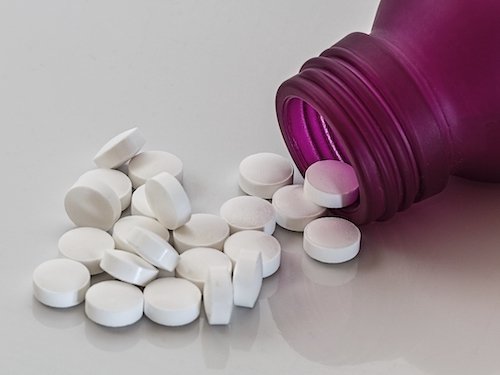
Expiration and Disposal
It is important never to consume expired medication. Instead, it is recommended to use methods, for disposing of them preferably with the guidance of professionals.
XIV. Handling Precautions
Safely Storing Away from Children
Ensuring that children cannot access the drug is not a precautionary measure but an absolute requirement that cannot be compromised.
What to Do in Case of Damaged or Broken Tablets
To prevent, under dosing or unexpected adverse reactions, it is important to safely dispose of compromised tablets.

